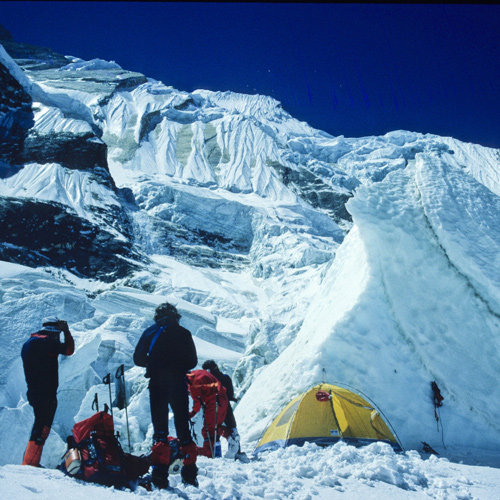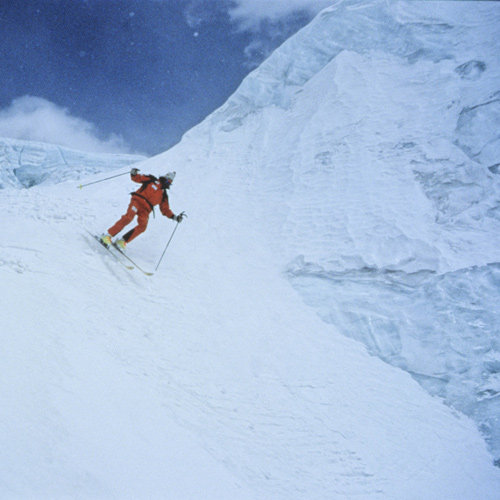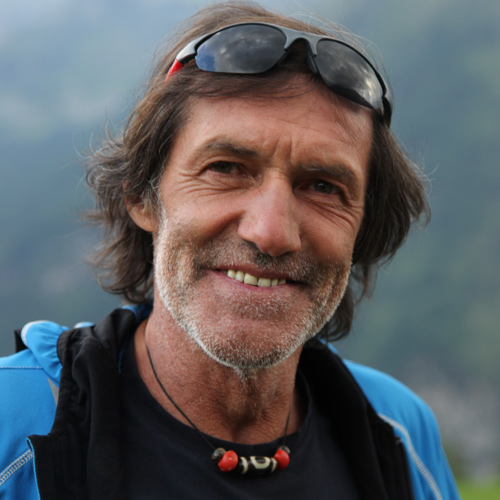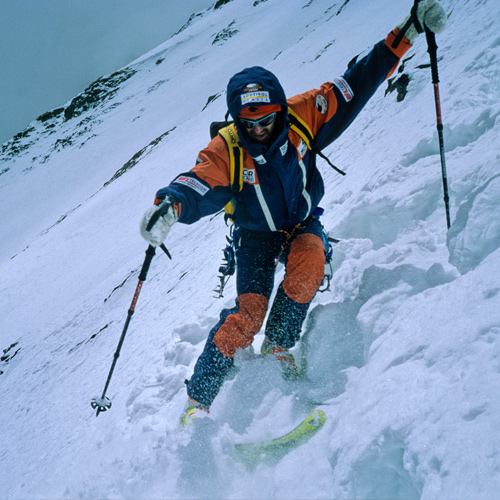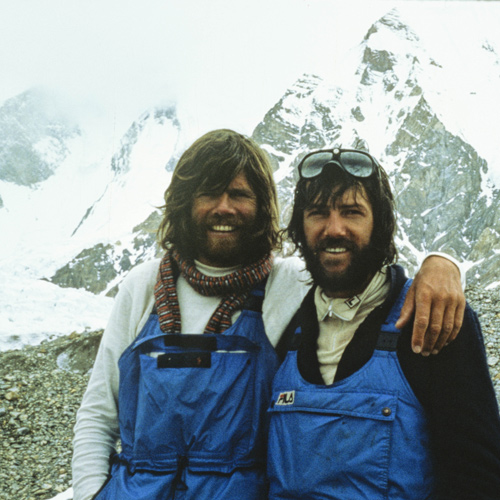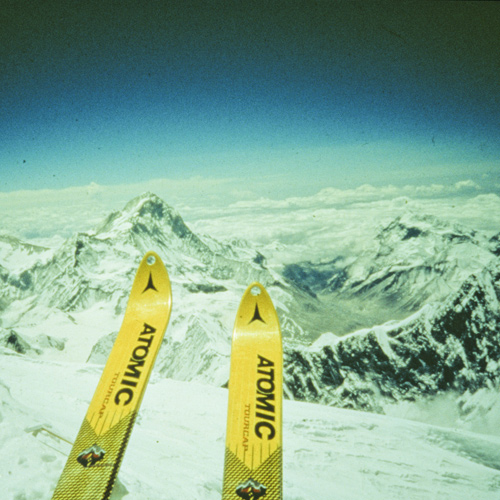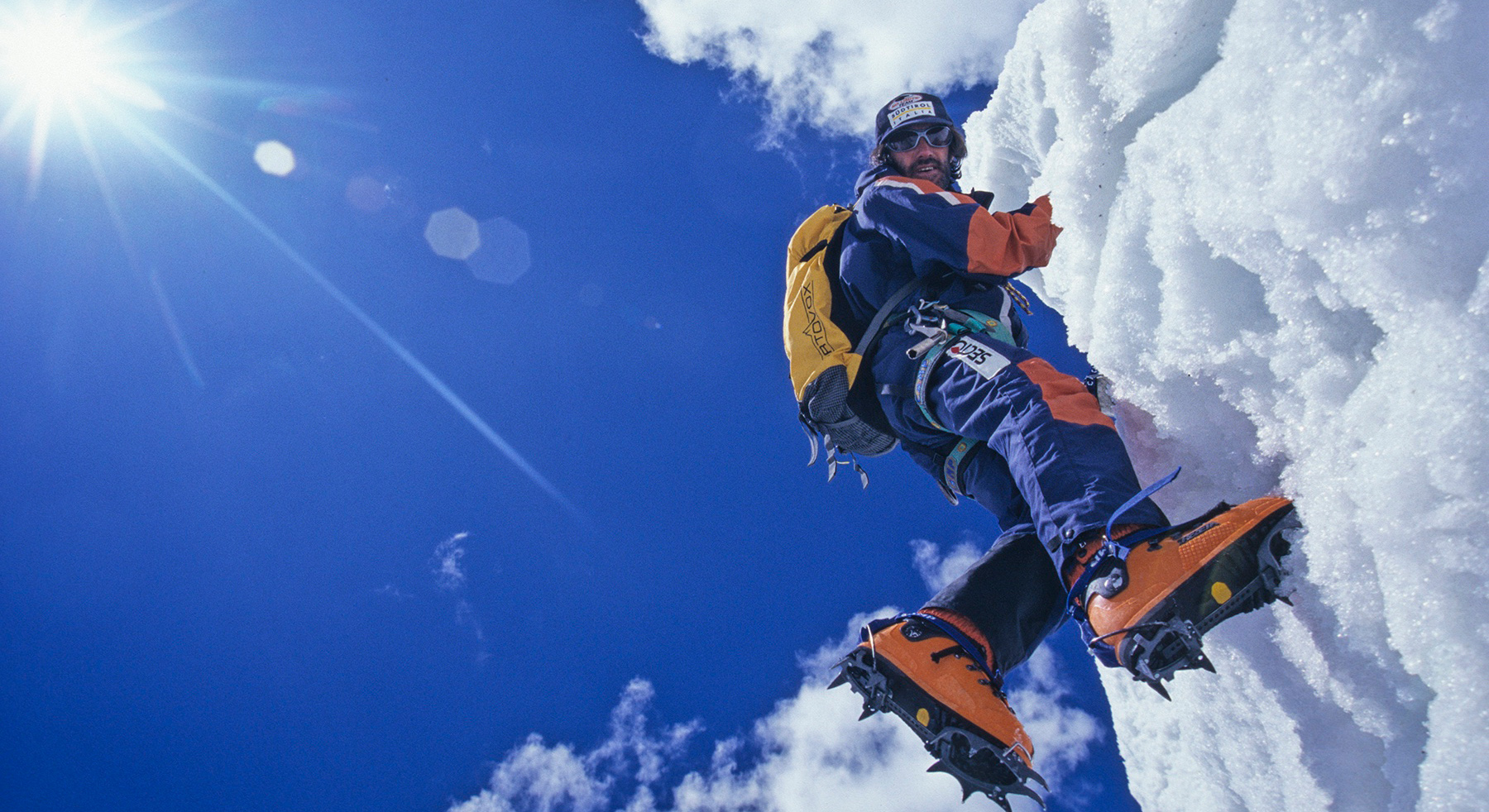
"There were a lot of questions about my expeditions, but I was never asked if it was nice up there."
The South Tyrolean Hans Kammerlander is one of the most successful extreme mountaineers of our time. In his biography, more than 2500 climbing tours, about 50 first ascents, and 60 solos of massive Alpine walls can be count.
He climbed twelve of the fourteen eight-thousanders. He descended with skis from the summit of the Everest and through the steep flanks of Nanga Parbat. As the first climber in the world, Hans succeeded in one of the two versions of the Seven Second Summits.
At the end of July, we asked Hans Kammerlander about his personal success stories and their emotional significance.

"A summit will not be yours until you're down again - before you belong to it. "
Hans, before the decampment of a glacier tour with his customers:
"One of my most significant personal successes was the ski run down from the summit of the Mount Everest in 1996. I was on the summit earlier than planned, could rest, stay in the moment, and enjoy the indescribable anticipation of the descent."
"The ascent of the second highest mountain in the world, the 8611m high K2, was also something extraordinary for me. The K2 is perfectly formed, beautiful, and much more difficult to climb than other eight-thousanders and only after 4 unsuccessful attempts, the ascent was finally successful after the 5th attempt. "
"The time with teacher Reinhold Messner was also something extraordinary. We were the first to cross the Annapurna northwest wall and the two peaks of Gasherbrum I + II. "
To reduce a moving, successful career to 3 events and a few words, says a lot about the person Hans Kammerlander but also about his way of climbing mountains.
(Annotation: In his expeditions, speed was always important for Kammerlander which could only be achieved solo or in small groups of two or three. For ethical reasons, he did not use bottled oxygen and reduced the equipment to the most necessary to not carry illusory safety up the mountain. Thereby he saved on weight to be as short as possible in the death zone.)
As an 8-year-old Hans Kammerlander climbed his first mountain. Secretly he followed a tourist couple to the Great Moose (3059 m), above his home village Ahornach. Only at the summit, they discovered him. However, instead of the expected slap in the face, there was an apple and a grandiose outlook which should fundamentally change and determine the future life of the mountain farmer boy. On that day, a path commenced which no one could have ever imagined how far and especially how high it would lead him.
In the biography of Hans Kammerlander, more than 2,500 climbing tours, about 50 first ascents, and 60 single trips of large Alpine walls can be count. He conquered twelve of the fourteen eight-thousanders. Seven of them together with Reinhold Messner. He skied down from the summit of the Everest and through the steep flanks of Nanga Parbat. With Reinhold Messner, he circled his homeland South Tyrol on the national borders. He crossed the two north faces of Ortler and Großer Zinne (“big peak”) within 24 hours. Besides, he also managed to climb all four arêtes of the Matterhorn in only 24 hours. As the first climber in the world, Hans Kammerlander succeeded in climbing all Seven Second Summits with his own interpretation.
In 2013, the South Tyrolean decided to end the race with the other extreme climbers. The beauty of alpinism should be at the forefront, and at the same time the adventure should not decline. Kammerlander began to search around the world for unique mountains which beauty surpassed one another. Only their appearance, which is similar to the Matterhorn in Switzerland, unite Kammerlander's idea of the "Matterhorns all around the World." The Shivling in India, the Stetind in Norway, the Ama Dablam in Nepal or Mount Assiniboine in the Rocky Mountains.
In the late autumn of 2017, Hans Kammerlander returns to the 8163-meter high Manaslu in Nepal, finally leaving his trauma of 1991 behind. During a summit attempt, his two friends Friedl Mutschlechner and Karl Großrubatscher lost their lives in a storm."I have realized: It is better to go forward and not to bury the head in the sand and stop. Thereby, the idea arose to perhaps go back to the Manaslu again and climb the mountain without performance pressure and thus end a path. "
Hans Kammerlander is a mountain guide and ski instructor. He still lives in his birthplace in the “Tauferer Ahrntal” and is the father of a daughter.
